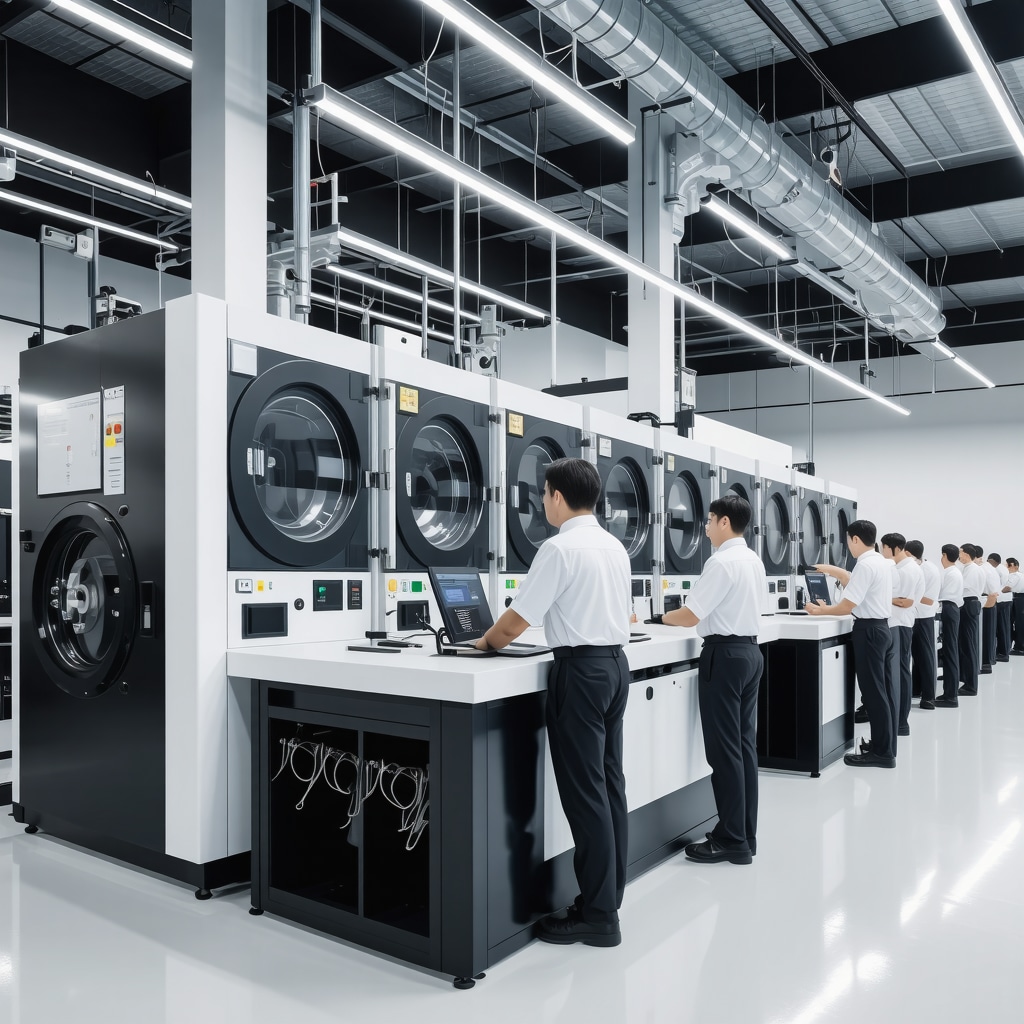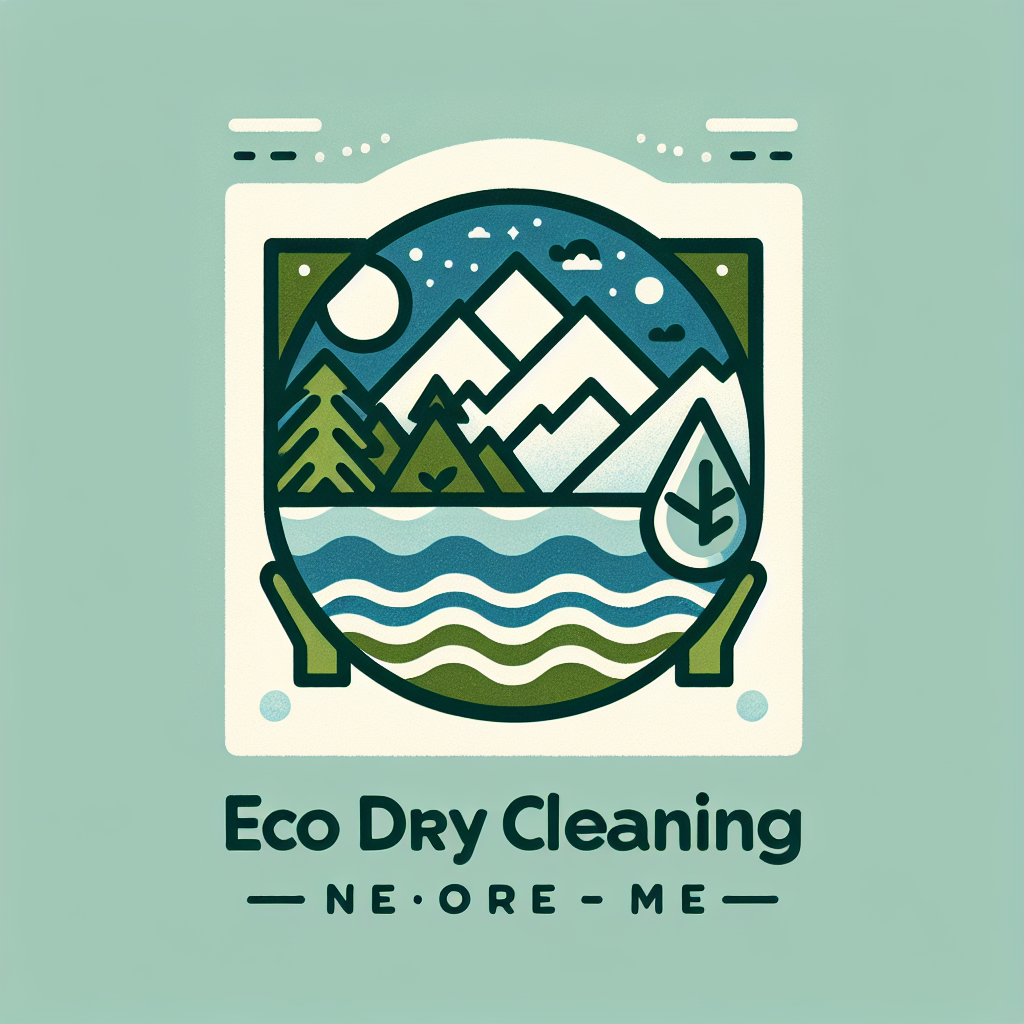Is Your Dry Cleaner Really Green or Just Playing Dress-Up?
Picture this: you drop off your favorite blazer at a “green certified” dry cleaner, feeling virtuous about saving the planet, only to find out later that the eco-claims were about as genuine as a three-dollar bill. In today’s eco-conscious age, discerning the true green dry cleaner from the greenwashed is a bit like hunting for a needle in a haystack—but don’t despair, your trusty columnist is here to spill the eco-tea.
Behind the Label: What Does “Green Certified” Actually Mean?
First things first, “green certified” isn’t just a flashy marketing phrase. Legitimate certifications come from respected bodies like the Green Business Bureau or the Environmental Protection Agency’s Safer Choice program. These certifications require cleaners to meet strict environmental standards, from using non-toxic solvents to employing energy-efficient machines. But beware: not every claim of “eco-friendly” is backed by rigorous standards, so it pays to ask the right questions.
What’s in Your Cleaner’s Cleaning Arsenal?
Does your dry cleaner use perchloroethylene, commonly known as perc? This chemical, while effective, is a notorious pollutant and health hazard. Truly green cleaners often opt for alternatives like liquid carbon dioxide or silicon-based solvents that are gentler on the planet and your wardrobe. Curious about these innovative options? Check out this guide on perc-free dry cleaning for an eye-opening look.
Transparency: The True Mark of Eco Integrity
A trustworthy green dry cleaner will openly share their cleaning processes and certifications. If you’re met with vague answers or evasive shrugging, it’s time to consider greener pastures. Customer reviews and third-party testimonials can also provide a window into their commitment to sustainability.
Can Your Clothes Tell the Tale of Green Cleaning?
If your garments emerge feeling harsh or smelling chemical-heavy, that’s a red flag. Green-certified cleaners prioritize gentle, plant-based solvents that protect fabric fibers and your skin. For those with sensitive skin or allergies, exploring non-toxic dry cleaning options can be a game-changer.
Why Does This Matter Beyond Your Closet?
Eco-friendly dry cleaning isn’t just about keeping your clothes fresh; it’s a frontline battle against environmental pollution and toxic chemical exposure. According to the EPA’s Design for the Environment program, choosing safer cleaning methods significantly reduces harmful emissions and water contamination.
So, next time you’re tempted by that green-certified sign, channel your inner detective. Ask for certifications, inquire about solvents, and don’t be shy about seeking out cleaners who truly walk the eco-talk. For more savvy tips on organic stain removal, don’t miss this article that dives into sustainable garment care.
Got a story about your own hunt for a bona fide eco dry cleaner? Drop a comment below — let’s swap tales and tips on keeping our wardrobes and planet spotless!
Beyond the Buzzwords: What Really Makes Dry Cleaning Eco-Friendly?
In the quest for greener garment care, many wonder if eco-friendly dry cleaning is simply a marketing trend or a genuine environmental solution. The truth lies in the nuanced interplay between solvent choice, energy consumption, and waste management practices. While many cleaners tout plant-based solvents, the entire lifecycle of these products—including sourcing, production, and disposal—must be scrutinized to assess their true sustainability.
For instance, some plant-derived solvents, although biodegradable, require intensive agricultural inputs that could offset environmental benefits. This complexity highlights why certifications from credible organizations like the EPA’s Design for the Environment program are invaluable, as they evaluate these multiple factors rigorously.
Innovative Practices Setting New Standards in Eco Dry Cleaning
Leading eco dry cleaners are adopting technologies that go beyond solvent substitution. These include closed-loop systems that recycle cleaning fluids, energy-efficient machines that reduce carbon footprints, and waterless cleaning techniques minimizing wastewater. For those interested in exploring these advancements, services like perc-free dry cleaning options showcase how innovation meets responsibility.
How Do Eco-Friendly Dry Cleaners Balance Fabric Care with Environmental Responsibility?
This question probes the heart of green garment care. Eco-friendly dry cleaners must delicately balance effective stain removal and fabric preservation with minimizing ecological harm. Plant-based solvents, such as those derived from corn or citrus, tend to be gentler on fibers while reducing toxic emissions. Yet, achieving this balance requires expertise, as some delicate fabrics may demand specialized cleaning approaches.
For practical guidance, consider reviewing techniques detailed in organic stain removal for delicate fabrics which align with ecological principles.
Consumer Choices: How Your Dry Cleaning Habits Influence Sustainability
Your choices as a consumer extend the reach of eco-friendly practices. Opting for green-certified dry cleaners and requesting plant-based solvent use encourages industry-wide shifts toward sustainability. Moreover, maintaining garments to reduce frequent cleaning, and selecting fabrics compatible with gentle eco-cleaning methods, amplify ecological benefits.
Research by the EPA underscores that consumer demand is a powerful driver for cleaner technologies and safer chemical usage in textile care.
Engage and Share: Join the Green Garment Care Conversation
Have you experienced the difference between traditional and eco-friendly dry cleaning firsthand? Sharing your insights or questions helps build a community committed to sustainable wardrobe care. Feel free to leave a comment below or share this article to spread awareness about the importance of choosing truly green dry cleaning services.
Unveiling the Chemistry: How Solvent Selection Shapes Eco-Friendly Dry Cleaning
Delving deeper into what makes a dry cleaner truly green requires an understanding of the solvents at the heart of the process. Traditional perchloroethylene (perc), while historically dominant, poses significant environmental and health risks due to its toxicity and persistence. Modern eco-conscious cleaners are pivoting to alternatives such as hydrocarbon solvents, liquid carbon dioxide, and silicone-based fluids like decamethylcyclopentasiloxane (D5). Each solvent embodies a unique chemical profile influencing biodegradability, volatility, and potential ecological footprints.
Hydrocarbon solvents, derived from petroleum, offer lower toxicity but still raise concerns regarding fossil fuel dependence. Liquid CO2 cleaning leverages supercritical carbon dioxide’s solvent properties, dramatically reducing chemical residues and emissions, albeit with higher operational costs due to specialized equipment requirements. Silicone-based solvents bring the advantage of biodegradability and minimal toxicity but are scrutinized for potential bioaccumulation effects in aquatic systems. Thus, solvent choice is a sophisticated balancing act between efficacy, environmental safety, and operational feasibility.
How Do Emerging Solvent Technologies Reconcile Fabric Integrity with Environmental Stewardship?
Addressing the nuanced question of solvent impact on textile longevity, research reveals that eco-friendly solvents often outperform traditional perc in preserving fabric tensile strength and colorfastness. For example, studies indicate that liquid CO2 cleaning mitigates fiber swelling and dye leaching, common issues with harsher chemicals. Likewise, silicone-based solvents’ low surface tension facilitates gentle stain removal without compromising delicate fibers. However, implementing these technologies demands skilled operator training and investment in infrastructure, underscoring the complexity behind green dry cleaning’s scalability.
For a comprehensive review of solvent chemistry and fabric interactions, the Industrial & Engineering Chemistry Research journal offers in-depth analyses by top textile chemists.
Innovative Waste Management: Closing the Loop for Zero-Emission Dry Cleaning
Beyond solvents, state-of-the-art eco dry cleaners integrate closed-loop solvent recovery systems that capture and recycle up to 99% of cleaning agents, drastically reducing atmospheric releases. These systems, combined with wastewater treatment technologies employing advanced oxidation processes, prevent contamination of soil and water bodies. Moreover, some pioneering facilities harness renewable energy sources, like solar or wind, to power their operations, further diminishing carbon footprints.
The synergy of these technologies exemplifies a holistic approach—where solvent selection, waste management, and energy use intertwine to redefine sustainability benchmarks in dry cleaning.
What Are the Challenges and Solutions in Implementing Closed-Loop Systems at Scale?
While closed-loop systems promise near-zero emissions, their adoption faces hurdles including high upfront capital costs, maintenance complexity, and operator expertise requirements. Recent innovations focus on modular system designs and automation to mitigate these barriers, enabling smaller operations to transition more feasibly. Additionally, government incentives and green certification programs increasingly recognize and support such investments, catalyzing broader industry shifts.
Exploring these advancements can empower consumers and business owners alike to advocate effectively for greener garment care.
By engaging with the technical nuances and emerging solutions in eco dry cleaning, we uncover pathways not just to cleaner clothes but to a cleaner planet. Ready to elevate your garment care knowledge? Dive deeper into solvent science and sustainable innovations by following our upcoming expert series.
The Chemistry Behind Eco-Friendly Solvents: Why It Matters More Than You Think
Understanding the chemical intricacies of solvents used in dry cleaning unveils the real impact on both your garments and the environment. Traditional perchloroethylene (perc) has long been scrutinized for its toxicity and persistence, but the shift to alternatives such as hydrocarbon solvents, liquid CO2, and silicone-based fluids like decamethylcyclopentasiloxane (D5) represents a nuanced evolution. Each solvent’s molecular properties dictate not only cleaning efficacy but also biodegradability, volatility, and ecological footprint.
For example, liquid CO2 cleaning leverages supercritical fluid properties to gently yet effectively dissolve soils without leaving chemical residues, promoting fabric longevity while minimizing environmental harm. Meanwhile, silicone-based solvents offer a biodegradable and low-toxicity profile, though ongoing research addresses potential bioaccumulation in aquatic systems. These dynamics emphasize the complexity behind truly green dry cleaning choices, surpassing mere marketing claims.
Next-Level Innovations: How Closed-Loop Systems and Renewable Energy Are Revolutionizing Fabric Care
Cutting-edge eco dry cleaners are redefining sustainability by integrating closed-loop solvent recovery systems that capture and recycle nearly all cleaning agents, virtually eradicating harmful emissions. When paired with advanced wastewater treatment methods such as advanced oxidation processes, these technologies prevent environmental contamination at multiple levels. Moreover, powering these operations with renewable energy sources like solar or wind further shrinks their carbon footprint, setting new industry benchmarks for environmental stewardship.
What Are the Expert Challenges in Scaling Closed-Loop Dry Cleaning Technologies?
Despite their promise, closed-loop systems present implementation challenges including significant upfront capital investment, operational complexity, and the need for specialized technician training. Modular system innovations and automation are emerging as practical solutions to these barriers, facilitating adoption by smaller enterprises without compromising environmental integrity. Additionally, supportive policies and green certification incentives are catalyzing wider acceptance, aligning economic feasibility with ecological responsibility.
Industry research, such as the detailed studies published in the Industrial & Engineering Chemistry Research journal, provide in-depth analyses that unravel these technological and environmental complexities, offering a roadmap for future advancement.
For those passionate about sustainable garment care, exploring advanced organic stain removal techniques in delicate fabrics can complement eco-friendly dry cleaning practices; check out this resource for expert guidance.
Ready to elevate your eco dry cleaning knowledge or share your experiences with progressive garment care technologies? Visit our contact page and join the conversation—your insights help shape a greener future for fabric care.

Expert Insights & Advanced Considerations
Balancing Solvent Chemistry with Fabric Longevity
While selecting eco-friendly solvents like liquid CO2 or silicone-based fluids, it is critical to evaluate not only environmental impact but also how these solvents interact with various fabric types. Experts recognize that the gentler chemical profiles often extend garment lifespan by preserving dye integrity and tensile strength, a factor vital for sustainable garment care and reducing textile waste.
The Role of Closed-Loop Systems in Achieving True Sustainability
Implementing closed-loop solvent recovery is a game-changer in minimizing emissions and solvent waste. However, scaling this technology requires overcoming significant operational complexity and investment barriers. Industry leaders advocate for modular, automated systems paired with ongoing operator training to make these solutions viable even for smaller dry cleaning businesses.
Consumer Influence as a Catalyst for Industry Innovation
Demand for genuine green dry cleaning services drives cleaner technologies and safer chemical usage. Consumers who prioritize certified eco dry cleaners indirectly push the industry to innovate, adopt renewable energy, and refine waste management practices. Understanding this dynamic empowers consumers to be active participants in the sustainability ecosystem.
Holistic Approach: Integrating Energy Efficiency and Waste Management
True eco dry cleaning goes beyond solvents to include energy-efficient machinery and advanced wastewater treatment. Experts emphasize that when renewable energy sources power operations and wastewater is treated with advanced oxidation processes, the cumulative environmental benefits multiply, setting a new standard for sustainable fabric care.
Curated Expert Resources
EPA’s Design for the Environment (DfE) Program: A cornerstone certification evaluating environmental and health impacts of cleaning agents and technologies, providing rigorous sustainability benchmarks.
Industrial & Engineering Chemistry Research Journal: Offers in-depth scientific studies on solvent chemistry, textile interactions, and emerging eco-friendly cleaning technologies.
Advanced Oxidation Processes in Wastewater Treatment: Detailed technical resources on innovative wastewater purification methods critical for zero-emission dry cleaning operations.
Green Business Bureau: Provides certification and best practices guidance for businesses aiming for verified green credentials in dry cleaning and other industries.
Specialized Guides on Organic Stain Removal: Resources like organic stain removal techniques bridge practical garment care with ecological responsibility, essential for sensitive fabrics.
Final Expert Perspective
In navigating the intricate landscape of eco dry cleaning, the interplay between solvent chemistry, advanced recovery systems, and consumer advocacy emerges as pivotal. Genuine sustainability requires a comprehensive approach—embracing certified plant-based solvents, closed-loop recycling, renewable energy, and rigorous waste treatment—to transcend greenwashing and deliver measurable environmental benefits. This holistic commitment not only safeguards your wardrobe but also champions the planet’s health.
For those eager to deepen their expertise or share professional insights, exploring resources like plant-based cleaning solvents and engaging with the community via our contact page offers a meaningful way to shape the future of sustainable garment care. Your participation fuels the green dry cleaning movement—because true expertise thrives in dialogue and action.

